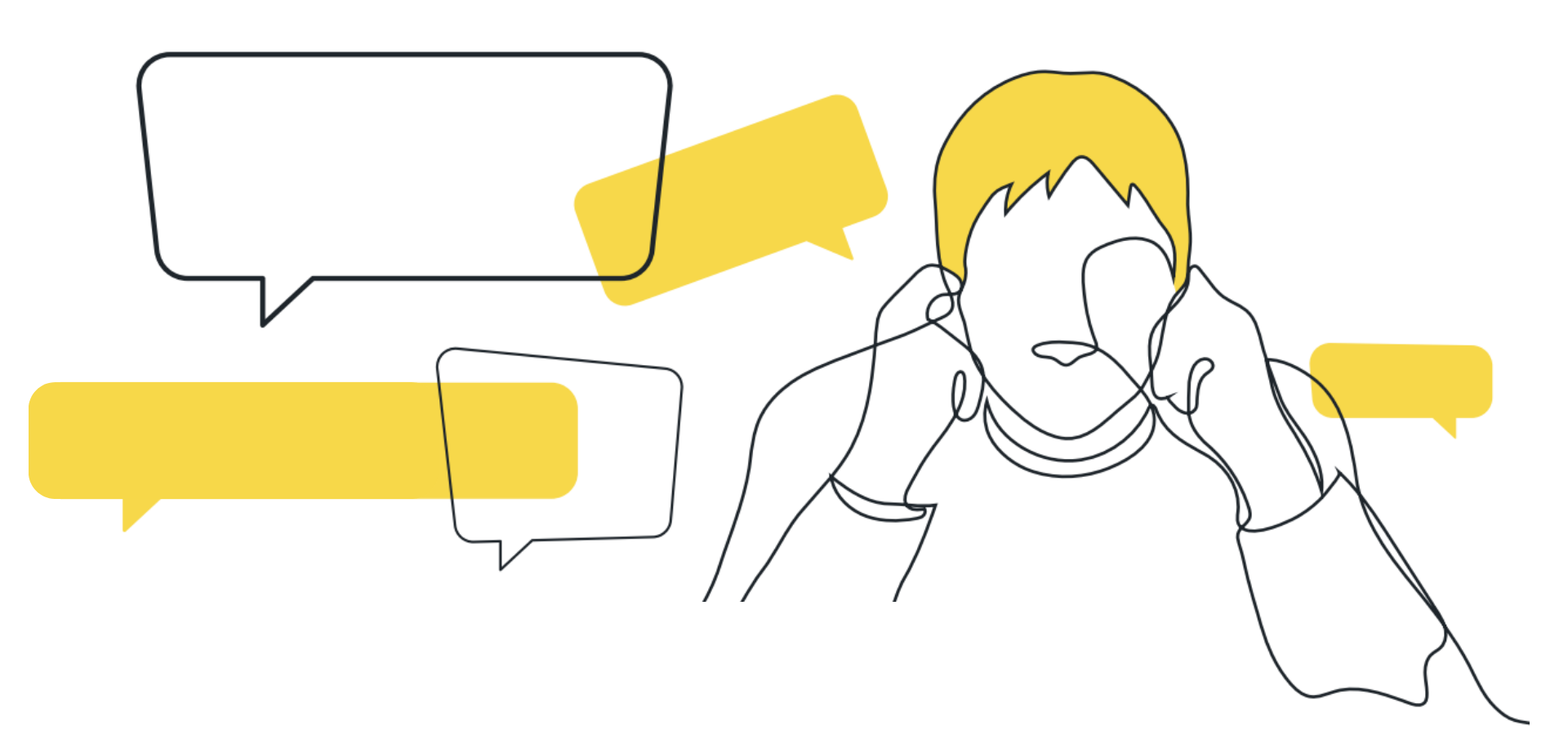Modern business is noisy.
Emails, instant messages, calls, WhatsApps, meetings, town halls, push notifications, social media, that quick two-minute chat in the office kitchen that turns into an impromptu 45-minute meeting debrief.
There’s no one culprit - we’re all responsible for creating this noise. Yes, even L&D. We’re constantly demanding attention to complete certifications, start new courses, provide feedback, join webinars… the list goes on, and when combined with all the other sources of noise, it’s easy to see why employees are suffering.
Nearly 70% of remote workers experience burnout as a result of digital communications.
– Forbes, 2023
Workers spend an average of five hours a day using digital communication tools, so that’s a lot of opportunities for interruptions, distractions and unnecessary noise from all angles. Constant communications contribute to burnout for 60% of employees, and almost half of workers say that ineffective communication negatively impacts their job satisfaction.
With so much going on all day every day, how on earth can we expect our employees to keep up with what actually matters to them? It’s time to reduce the noise levels in our businesses - and L&D is perfectly positioned to lead the charge.
.png?width=1250&height=50&name=Untitled%20design%20(1).png) How do we typically handle workplace noise?
How do we typically handle workplace noise?

When we run into any issue at work, the temptation is to throw more ‘stuff’ at the problem. Whether it’s a platform, an elearning course or a totally revolutionary policy that will change the trajectory of your business forever, it’s hard to resist the lure of ‘newness’ as a response to workplace challenges. According to RedThread research, there are at least 426 learning technology providers on the market, so temptation lies around every corner.
Now, in case it wasn’t obvious… that presents us with a major challenge when things are already too noisy. Too much noise + more noise = … well, you get the picture.
In fact, what we should often be doing, especially when we’re dealing with noise, is to think about what we can scale back. Less is often more, and more functionality or content doesn’t necessarily mean a better solution. Sometimes, we need to look at what we’ve already got and see what’s contributing to distractions or overwhelm, rather than adding to the problem.
To be clear, we’re not suggesting you burn down everything you’ve built! Instead, sometimes building better learning experiences means cutting down on noise and laser focusing on what people really need, and when they need it. In our experience, that very often means making the most of what you’ve got rather than always trying to create something bigger.
What happens when we let the noise take over?
 Sometimes, we can’t resist the pull of more, more, more. When we let the workplace get too noisy, employees quickly get burnt out, distracted, overwhelmed and don’t know what to prioritise. Naturally, this sends engagement plummeting, and people stop engaging with anything at all.
Sometimes, we can’t resist the pull of more, more, more. When we let the workplace get too noisy, employees quickly get burnt out, distracted, overwhelmed and don’t know what to prioritise. Naturally, this sends engagement plummeting, and people stop engaging with anything at all.
This creates frustration, both for employees and the L&D team, and the cycle continues - more content, more noise, more churn. A whopping 97% of employees say communication affects their task efficacy on a daily basis. Employees leave the company in their droves, or they engage in quiet quitting, or they end up burnt out, stressed and resentful. In other words, it’s not good for anyone.
.png?width=1250&height=50&name=Untitled%20design%20(1).png)
What’s the difference that makes the difference?
L&D can try 100 things to achieve a goal, but what’s the one thing that moves the needle the most? As we know all too well, L&D’s resources are finite, so it makes sense to ‘spend’ the most where it makes the most difference. Of course, there’s a strong element of trial and error involved as that ‘one thing’ will look different for every business, but there are simpler, less risky ways to get started.
It’s our job as L&D and HR professionals to curate content, maintain quality and cut through the noise on behalf of our employees. In doing this, we make it easier for our people to find exactly what they need (and not what they don’t), which can improve organisational productivity by as much as 25%. This means truly understanding your audience to ensure your content is aligned with their needs.
Time is our biggest competitor in L&D.
61% of L&D professionals say that a lack of time is their biggest obstacle to success, with 42% struggling with budget constraints, so it’s clear that doing more with less has never been more vital for L&D.
Essentially, any time-saving measures we can take are a good place to start making a difference. This could be segmenting your audience into teams for more targeted content delivery, automating comms with nudges from your platform or pushing the right content to the right people at the right time with suggested or featured assets.
.png?width=1250&height=50&name=Untitled%20design%20(1).png)
What does this look like in practice?
.png?width=1250&height=50&name=Untitled%20design%20(1).png)